What's New
Displaying results 1401 - 1410 of 4052
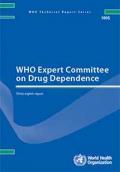
Resource | Publications,
This report documents the thirty-eighth meeting of the World Health Organization (WHO) Expert Committee on Drug Dependence (ECDD) that took place in Geneva, Switzerland from 14 to 18 November 2016.
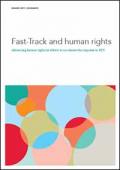
Resource | Publications,
UNAIDS has called on all countries to harness the next several years (until 2020) as a key window of opportunity for rapidly scaling up the HIV response in three main areas: HIV prevention, HIV testing and HIV treatment. This Fast-Track approach—endorsed by the United Nations (UN) General Assembly in the 2016 Political Declaration on Ending AIDS—requires maximizing existing tools in order to quicken the pace of progress to achieve specific targets and end the AIDS epidemic as a public health threat by 2030.
This document offers guidance on why and how efforts to Fast-Track HIV prevention, testing and treatment services can and should be grounded in human rights. Beyond being an imperative in themselves, human rights principles and approaches are critical to addressing barriers to HIV services and to achieving HIV targets. Human rights principles and approaches will help maximize the reach and impact of HIV prevention, testing and treatment programmes. They also will help address potential human rights challenges and prevent abuses that may occur in the context of urgent efforts to Fast-Track the achievement of HIV prevention, testing and treatment targets.
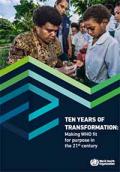
Resource | Publications,
Over the past decade, extraordinary progress has been made in transforming the World Health Organization (WHO), bringing it into the 21st century and positioning it not only as the world’s public health agency, but as forward-looking and fit-for-purpose. By developing innovative leadership, managerial structures and systems, the changes that WHO has undergone have resulted in increased effectiveness, efficiency, responsiveness, transparency and accountability. Above all, these reforms have been grounded in robust metrics to measure performance and have been integrated into organization-wide systems and processes.
The Organization has evolved fundamentally while weathering some of the greatest health crises the modern world has seen. Anyone walking in the doors at WHO today finds an agency that is revitalized, ready for the challenges of this century, operating smoothly across its three levels – headquarters, regions and countries – and squarely engaged with partners and governments to tackle this era’s health challenges. This report tells the story of that transformation, from 2007 through to the current day.
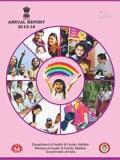
Resource | Publications,
This Annual Report outlines the activities of the Department of Health & Family Welfare and of schemes implemented over the year 2013-14.
The obligation of the Government to ensure the highest possible health status of India's population and to ensure that all people have access to quality health care has been recognized by a number of key policy documents.
The Ministry of Health & Family Welfare is implementing various schemes, programmes and national initiatives to provide universal access to quality healthcare. The approach is to increase access to the decentralized public health system by establishing new infrastructure in deficient areas and by upgrading the infrastructure in the existing institutions.
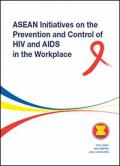
Resource | Publications,
The establishment of the ASEAN Business Coalition on HIV-AIDS (ASEAN-BCA) supports the building of a people-oriented ASEAN as called for in the ASEAN Charter, and implementation of the ASEAN Labour Ministers’ Work Programme 2010-2015.
As the majority of people living with HIV in ASEAN Member States are of productive working age, this adversely gives impacts on the well-being of millions of workers and their families, and on the productivity of nations and their enterprises. Considering this, the business community, which is usually represented by employers’ associations, shares the responsibilities to prevent and protect their workers from HIV and AIDS-related problems and discrimination. In partnerships with stakeholders, the business community would be able to build networks and mobilise resources to prevent and control HIV and AIDS in the workplace with greater results. Against this backdrop, the ASEAN-BCA is developed.
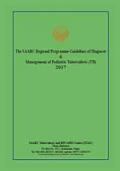
Resource | Guidelines,
The World Health Organization (WHO) estimates that childhood TB accounts for 6% to 10% of all TB cases worldwide each year. In countries with a high rate of TB disease, children account for as much as 40% of all new TB cases.
In 2014, there were an estimated 3.1 million incident cases of TB in the SAARC Region, equivalent to 185 cases per 100000 populations and estimated deaths due to TB was 0.37 million. This carries 32% of the global burden of TB incidence. Four of the eight Member Countries in the Region are among the 22 high burden countries, with India accounting for 23 % of the world’s TB cases. Among 3.1 million incident TB cases, 2.1 million are notified new and relapse cases. Published data about the epidemiology of TB in children is scarce in SAARC Region, though it is considered one of the most common causes of childhood morbidity.
The guideline focuses on being able to provide guidance in child TB to health workers working at the primary or secondary level.
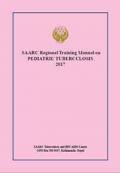
Resource | Tools,
According to Global TB Report 2015, worldwide, 9.6 million people are estimated to have fallen ill with TB in 2014: 5.4 million men, 3.2 million women and 1.0 million children. Globally, 12% of the 9.6 million new TB cases in 2014 were HIV-positive. It is estimated that accurate diagnosis and good reporting system children are likely to contribute 10-20% of disease burden in areas where the TB is poorly controlled. The incidence of paediatric TB provides an accurate measure of ongoing transmission within communities, which is a key indicator of control. Despite decline in death due to TB globally is still very high. In 2014, TB killed 1.5 million people (1.1 million HIV-negative and 0.4 million HIVpositive), making it one of the deadliest disease in the planet. The toll comprised 890,000 men, 480,000 women and 140,000 children.
A common misconception is that children are not severely affected by the TB epidemic and rarely develop severe forms of disease. This is not the case in TB endemic areas, where children are often present with advanced and serious disease (TB meningitis, Miliary TB).

Resource | Presentations,
The presentation shows Situation of the HIV Epidemic in Cambodia, sex behavioral, HIV and STI trends among brothel-based sex workers, Key Lessons Learned from Cambodia 1.0: How Cambodia stabilized HIV epidemic, major challenges and more.
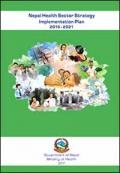
Resource | Publications,
Under the auspices of National Health Policy 2014, Nepal Health Sector Strategy (NHSS) 2016/17-2020/21 is the primary instrument to guide the health sector for the next five years. It adopts the vision and mission set forth by the National Health Policy and carries the ethos of Constitutional provision to guarantee universal access to basic health services.
NHSS places health at the centre of overall socio-economic development. It guides the health sector’s response in realizing government’s vision to graduate Nepal from ‘Least Developed Country’ to ‘Middle Income Developing Country’ by 2022. Developed within the context of Sector Wide Approach (SWAp), it sees partnership as a cornerstone for health development in Nepal. The strategy was developed jointly by the government and its development partners and commit to align their efforts to NHSS priorities and are jointly accountable to achieve the results. NHSS also harnesses multi sectoral approach to address social determinants of health.

Resource | Publications,
The Annual Health Bulletin 2017 is divided into three parts: part one includes State of the Nation’s Health; part two with Millennium Development Goals and National Health Indicator Estimates; and part three with tables and figures. Part one describes progress and challenges of the health system. Part two provides the status of health indicators. This publication is the culmination of monthly routine reports including morbidity, activity and Annual Household Survey report from various health centers in the country.
The publication of an Annual Health Bulletin is aimed to make available the data both for policy directions and programmatic interventions. It also serves an important source of information for various stakeholders including various sectors, UN partners and non-government organizations.





